Wintering Ducks
What are some of the common ducks that show up in Tucson at this time of year
Wintering Ducks have arrived in Tucson as they do annually. They may be found wherever there is a pond or lake or stream in Pima County. Over the past few weeks I've visited El Rio Preserve, Sweetwater Wetlands, the Sewailo Golf Course, Reid Park and Agua Caliente Park. These photos are a collection of some of the wintering ducks in our town now. You can explore more about any of these birds at https://www.allaboutbirds.org/news/
The Northern Shoveler was moving quickly across the El Rio Preserve, hunkered low to the surface of the water. That massive bill helps this large duck species stand out from the others.
Northern Pintail ducks seem to be here in greater numbers this year. Their long, pointed tail gets even longer during breeding season. The white rises to a nice stripe on its neck to contrast with the chocolate colored head.
Although my camera settings weren't right, I still was able to capture this Pintail as it took flight at Sweetwater.
When people think of ducks, usually the image that comes up is that of a Mallard. The iridescent green head of the breeding males along with the yellow bill and the brown breast are the color patterns you see. Mallards are the ancestors of almost all domestic duck breeds.
The Mallards rest during much of the day. Its bill is tucked onto its back. The bill is heavy to hold up all day long so resting it on the back really helps. Mallards have pale eyelids. Most ducks with dark irises have pale eyelids.
Sometimes birds or ducks have names that actually do match a physical feature. This duck is called a Redhead. Though not really fire-engine red, the color is often defined as cinnamon or cinnamon-red and is set against the black breast and gray body of this medium sized duck.
The Ruddy Duck in the background is definitely not Ruddy at this time of year. During breeding season, its plumage will turn a "ruddy" color, sometimes described as "chestnut" and the male's bill will turn pale blue. In front of the Ruddy Duck is a Ring-necked Duck. This duck seems to have a confusing name, as it has an observable ring around its bill and no apparent ring around its neck. However, early naturalists could see a light brownish ring around its neck when they’re examining specimens in their labs.
At Agua Caliente Park these two male Mallards made a bee-line towards me. It seems like they have been fed by humans and they were certain that I might do the same.
Compared to many other ducks that have some sort of flashy plumage, the Gadwall male is much more understated in its looks. Although intricately patterned, the general look of the Gadwall is somewhat plain but the black tail is distinctive. Often there are white feathers visible above the black tail.
Here is another duck with a name that can be confusing. The males have a prominent, nice looking green swoop from their eyes to the back of their necks, so of course they are named "Green-winged" Teal!! To be fair, they do have green wing patches that are visible in flight but are usually hidden when the birds are not in flight.
All of these ducks are special, but I have saved one of my favorites for the next email. You can learn a bit about these snow-white ducks in this Birdnote piece https://www.birdnote.org/podcasts/birdnote-daily/flickers-and-buffleheads and photos will follow in my next email!!!



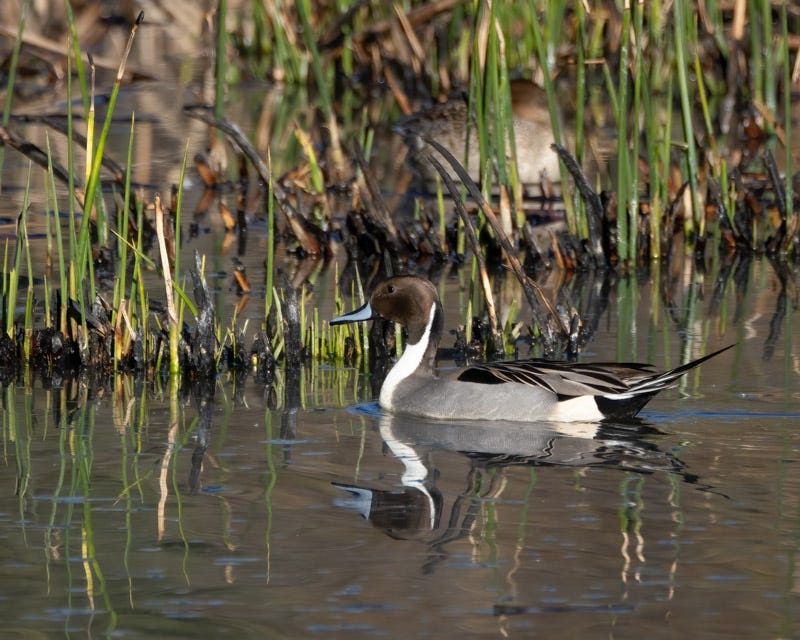
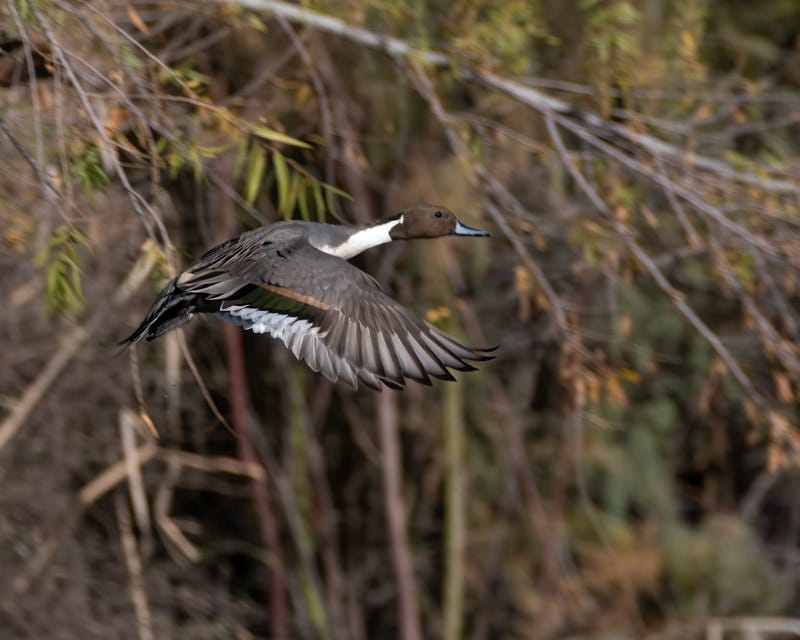

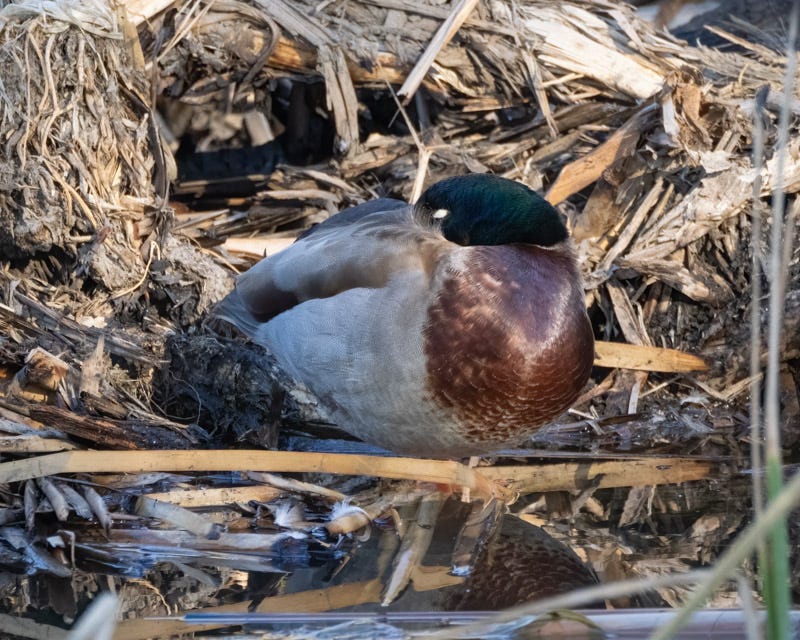
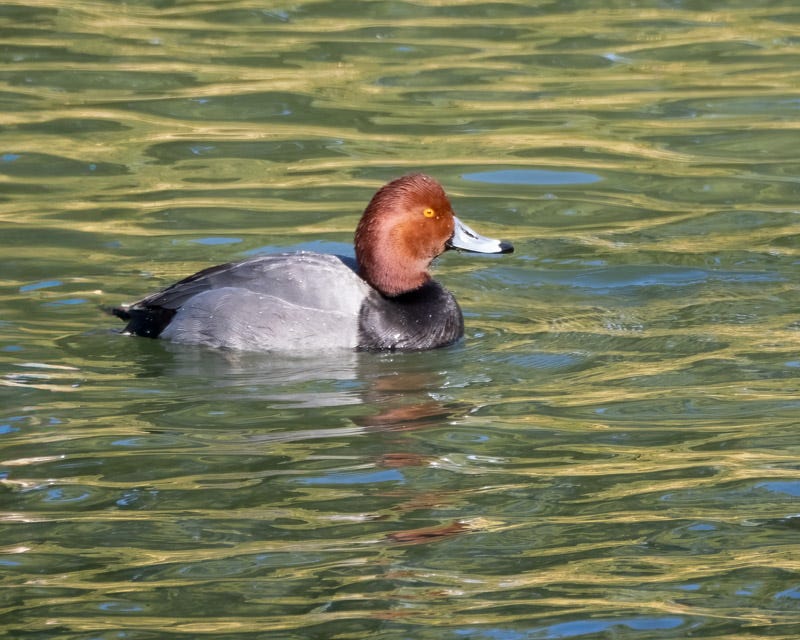
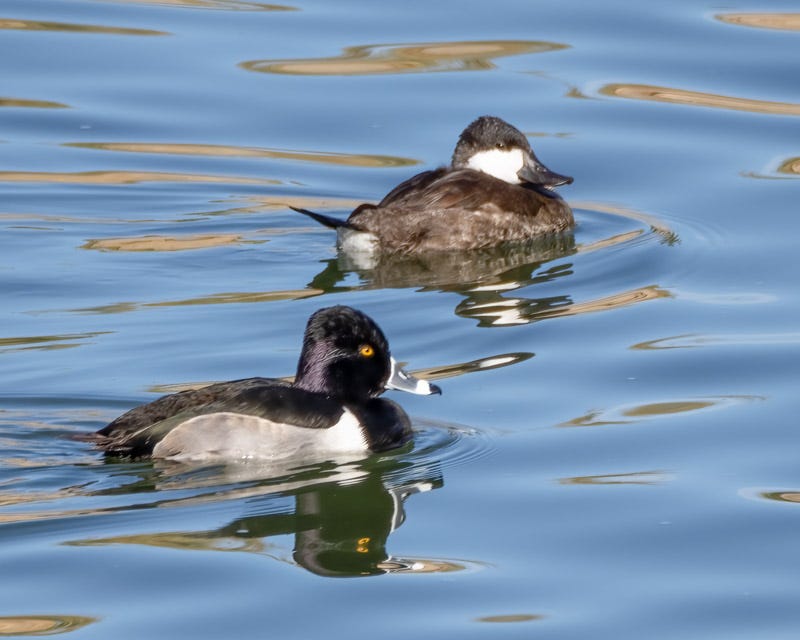
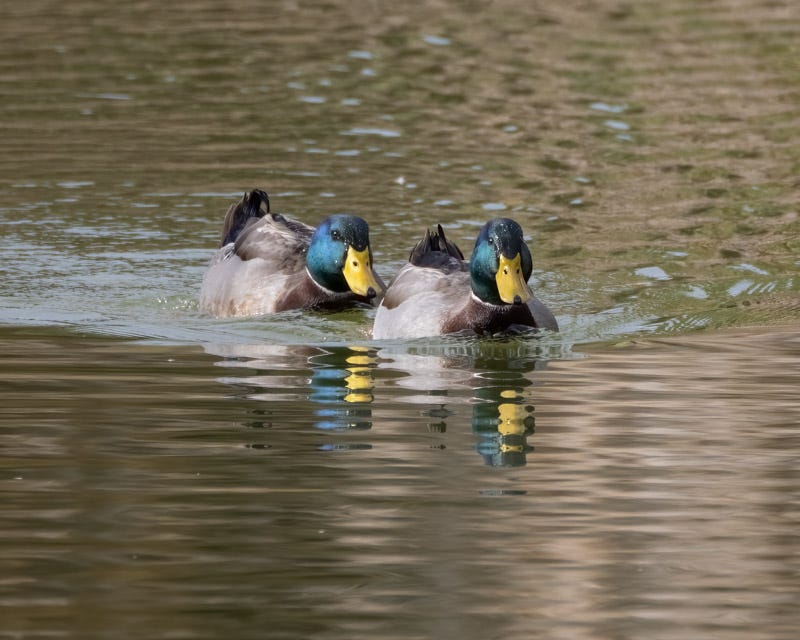
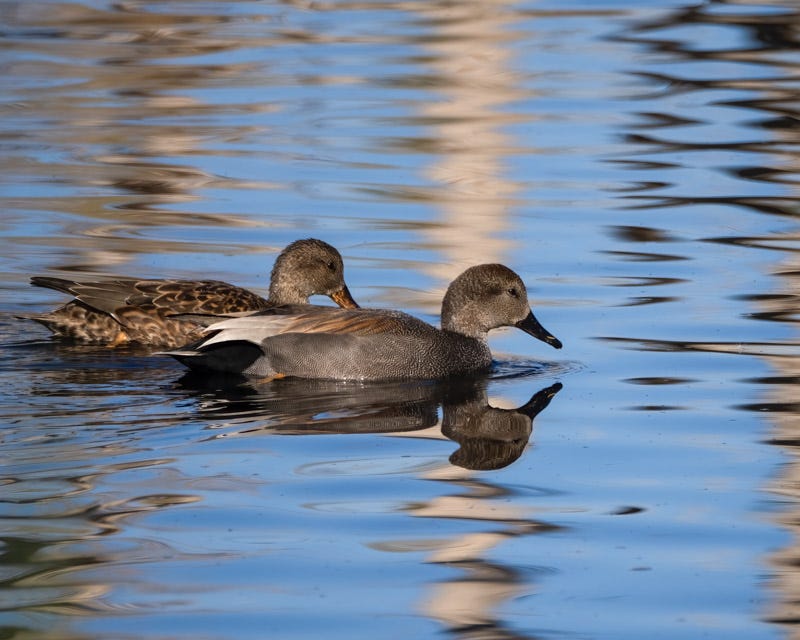
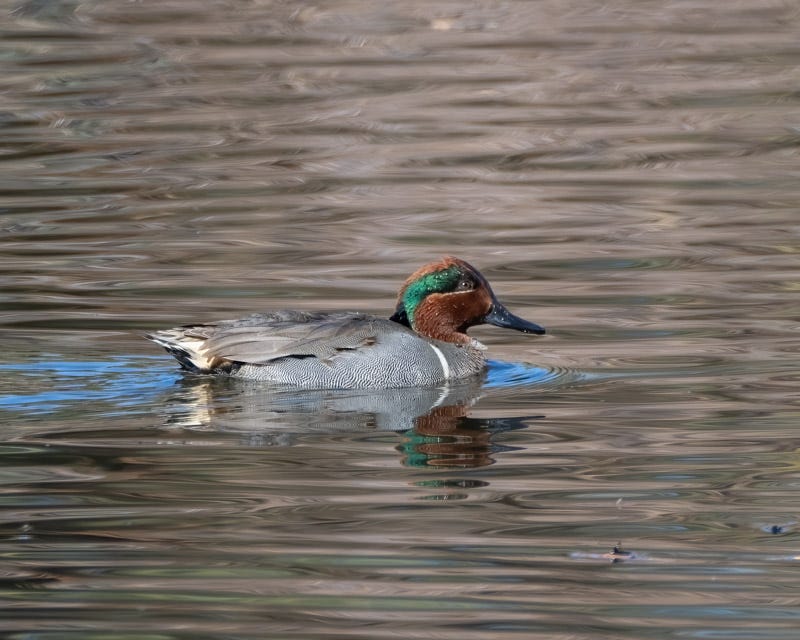
Thanks for sharing the wonderful images of the ducks. I really loved your fantastic capture of the Pintail in flight.
Those mallards made a beeline for you because animals are good judges of humans. They knew a nice guy was in the vicinity!
Ps. The photos are much clearer in the app than in the email!